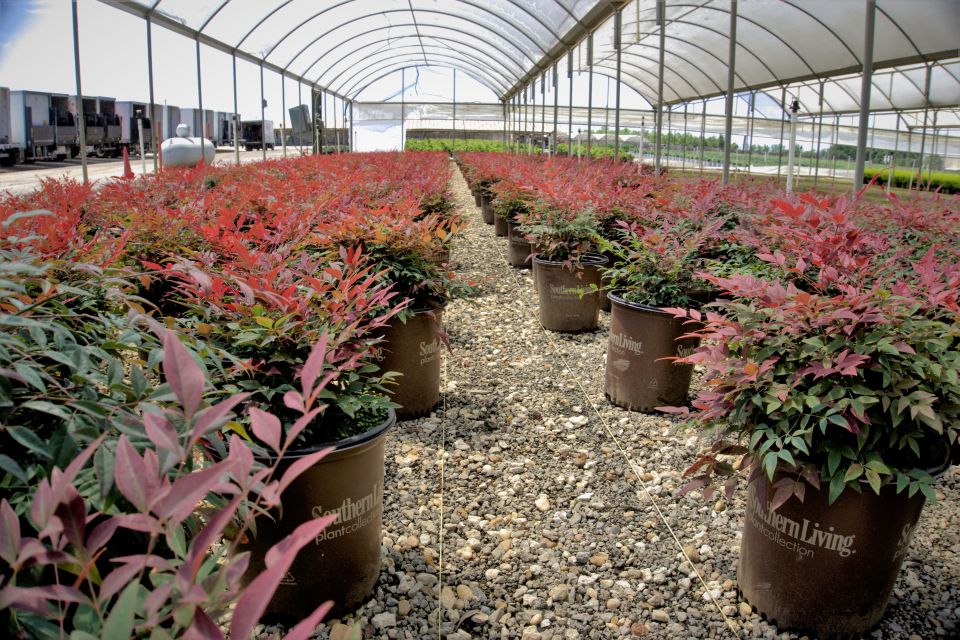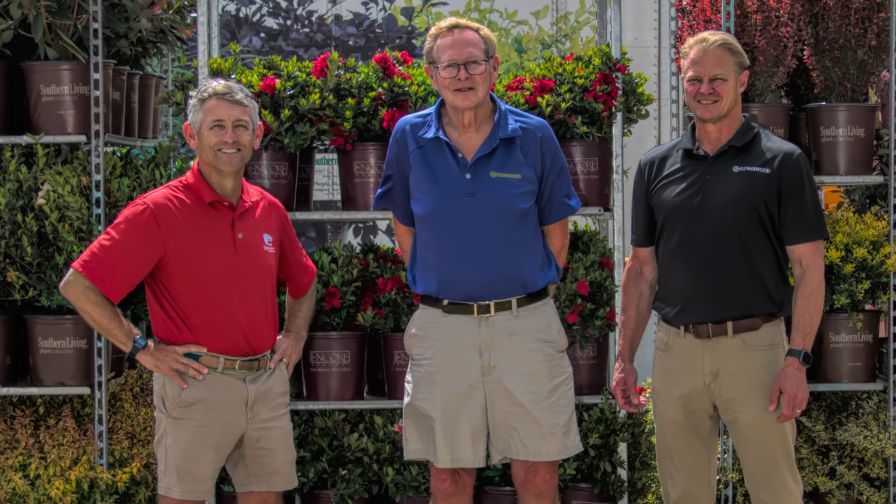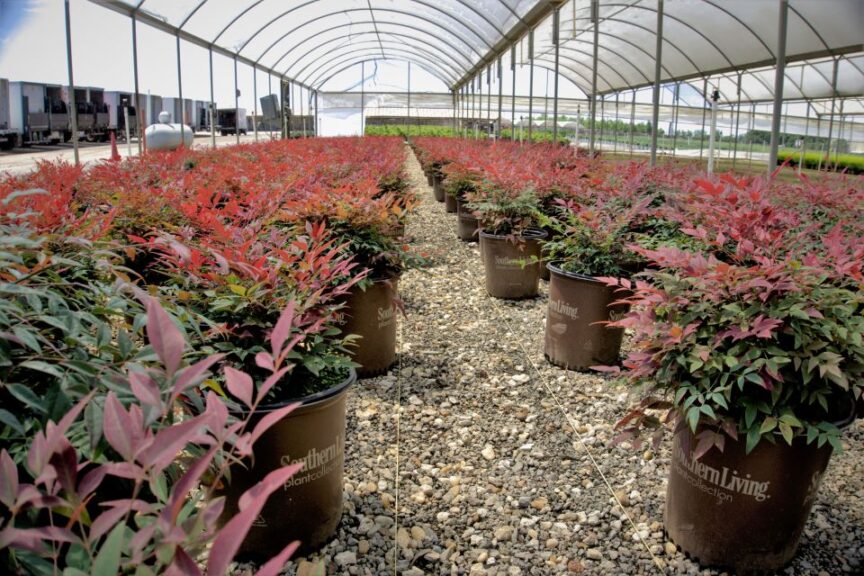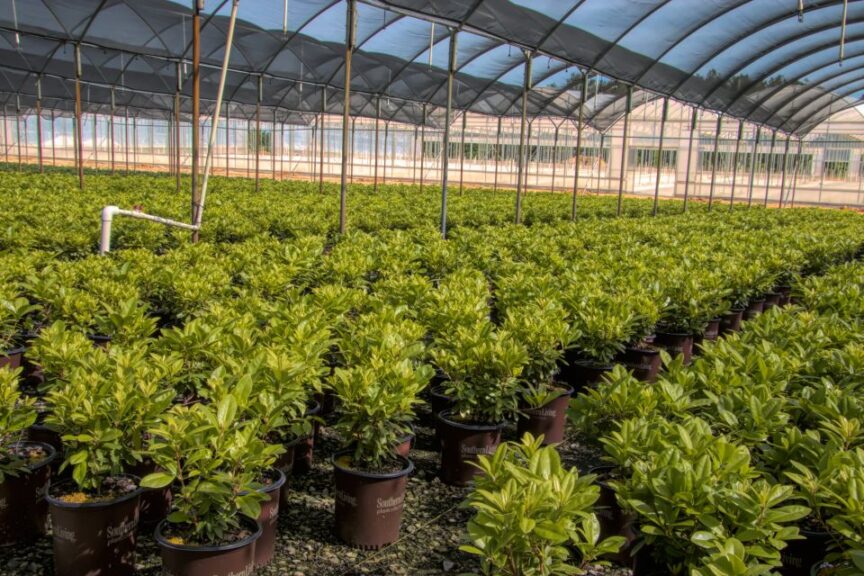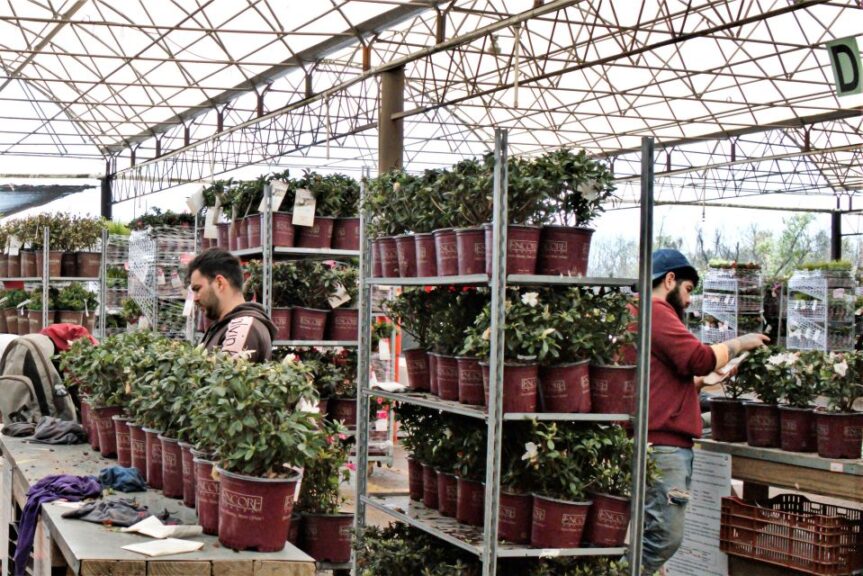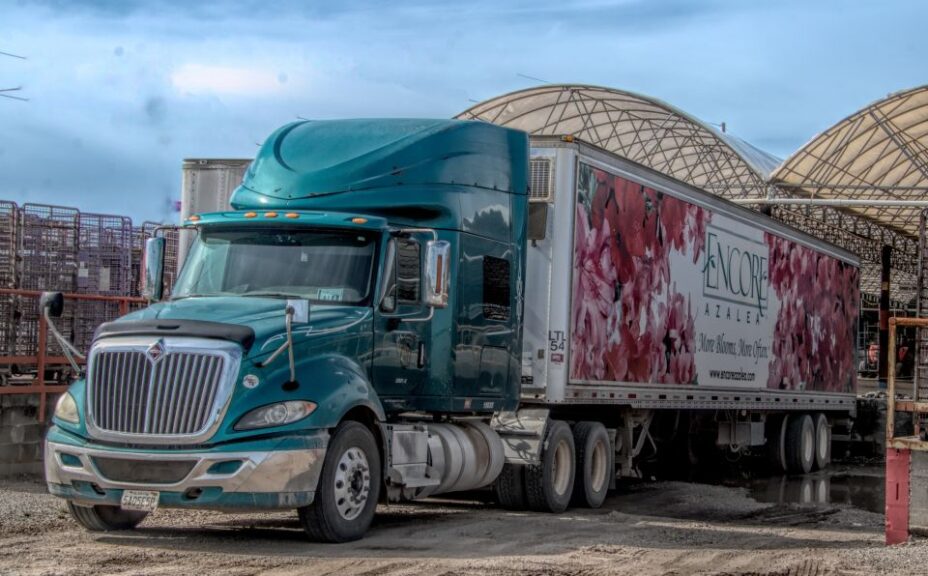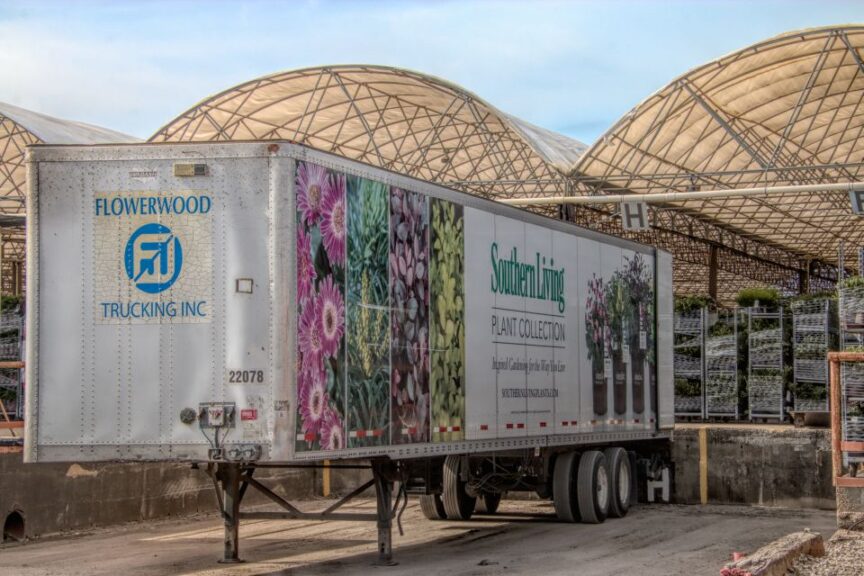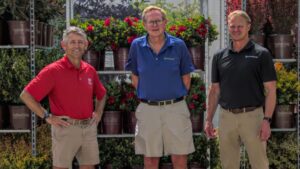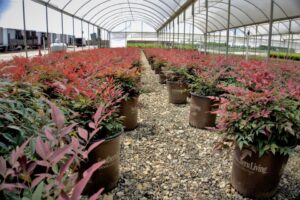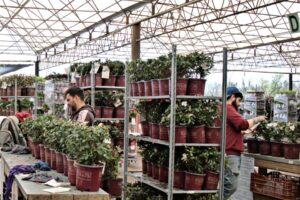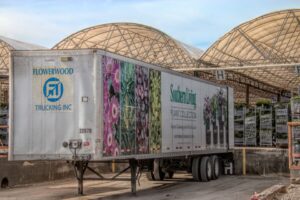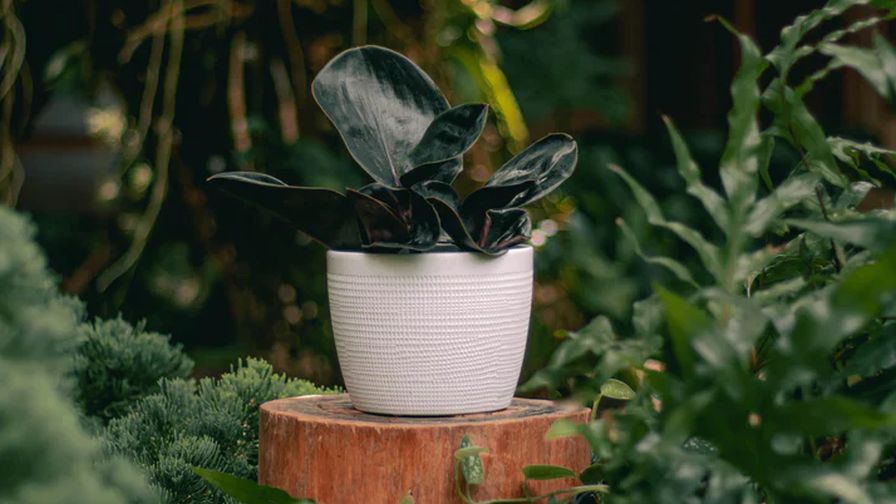Flowerwood Nursery Thrives with Hard Work and Dedication
When current CEO Ellis Ollinger started working at Flowerwood Nursery in Mobile, AL, in the late 1980s, he quickly received his first piece of advice.
“If you show up here and you can’t find something that needs fixing, you’re not looking hard enough,” said owner Greg Smith at the time.
Those words are still passed down to employees today. Flowerwood Nursery, an industry leader and shrub grower for more than 70 years, makes daily improvements to serve its customers.
Greg Smith’s grandfather, Harry Smith, founded Flowerwood Nursery in 1938. Harry Smith, a prominent attorney in Mobile, AL, representing railroad corporations, found peace and relaxation in gardening. The business grew from his backyard hobby — growing camellias.
When Greg Smith’s father, Greg Smith Sr., returned from serving in World War II, he “rode the baby boom,” according to Ollinger. The father saw the population boom in Southeast cities and grew his business along with the cities.
Today, Flowerwood Nursery has four locations in Alabama — Mobile, Loxley, Grand Bay, and Ranburne — and locations in Cairo, GA, and Bushnell, FL. With 2 million square feet of controlled-environment production, the plants reach home improvement stores and independent garden centers from Texas to the East Coast. Owner Greg Smith says the family business has continued to thrive because of its focus on the customers.
Customers Come First
About 15 years ago, Flowerwood changed its approach to shrub production. Smith says they started at the end of the process, asking themselves, “What needs to be on the table and when?” From there, the team works backwards. Flowerwood has dedicated table space for Southern Living and Encore Azaleas at home improvement stores across the Southeast. By determining what the end product is and when it needs to arrive, growers have been able to improve their production process to best serve the end consumers.
Many of Flowerwood’s retail partners are Lowe’s Home Improvement, The Home Depot, and Walmart locations. Flowerwood’s Vice President of Sales and Marketing Todd Carnley says Lowe’s Home Improvement started in North Carolina, The Home Depot in Georgia, and Walmart started in Arkansas. All of these are core states for Flowerwood’s market.
Flowerwood also has an e-commerce division, which accounts for 7% of its business. Customers can order plants direct-to-consumer at plantsbymail.com.
Marketing Strategies Increase Plant Demand
The team at Flowerwood Nursery works closely with Plant Development Services, Inc. (PDSI) to offer better genetics to the end consumer. Smith founded PDSI in 1996. PDSI works to offer varieties that eliminate common landscape problems, Carnley says. For example, PDSI is working with Loropetulam to develop a new cultivar that keeps its color all season long and does not grow too tall. PDSI promotes its brands and places advertisements in consumer publications. Flowerwood makes sure that the same plants in the advertisements are sitting on tables in stores.
“We have consumers coming in who actually ask for the plant by name,” Ollinger says. “That’s one of the things we were innovators in early on. We were a trailblazer in the branding of the shrub.”
Trucking Branch Solves Delivery Problems
Flowerwood has distinguished itself from other growers with its affiliated trucking company, Flowerwood Trucking, and its logistics company, Loxley Logistics. In the 1990s, when Flowerwood started doing business with chain stores, shrubs were delivered on racks. Flowerwood needed to get the racks with plants to the customer, but also retrieve its empty racks.
“We were paying for the truck to go there and back to bring our very expensive racks back,” Ollinger says. “Greg and I decided to get four trucks and a bunch of racks. We got up to about 10 trucks, and we had to figure out how to keep these trucks busy when they don’t have plants, to defray costs. So, we got our own authority to run general commodities, and we got into the trucking business.”
The fleet now consists of 40 semis and 135 trailers with lift gates, although Ollinger says he could use another 10 to 20 trucks.
“It’s been a slow build. We do not regret it,” Ollinger says. “It comes with all the problems everybody says — drivers, accidents, you name it. But with the last two years, our rule was if you have half as many trucks as you need on your busiest day, then you have twice as many as you need on your slowest day. And that’s what you can afford to get through the off-season.”
It is ideal for trucks to arrive at retail locations at night, Ollinger says, so they do not disturb peak hours of business. Even when Flowerwood hires a truck, the driver must use Flowerwood’s trailers to maintain the same level of service.
“Sometimes our driver is the only person from Flowerwood our customer sees,” he says. “We have them in a uniform and a hat, and we get lots of compliments about it. It has not been easy. It’s been a struggle, but it’s worth it.”
Loxley Logistics picks up the slack where Flowerwood Trucking leaves off. The company forms contracts with carriers to line up the number of trucks Flowerwood needs each year.
Training the Next Generation of Growers
All growers are feeling the pinch when it comes to finding workers. In order to make Flowerwood a desirable place to work, the company is moving toward more mechanization. Ollinger says they are reinventing workspaces to make them more ergonomically efficient and comfortable. Flowerwood is investing in forklifts, potting machines, sticking machines, and conveyor belts to attract a reliable year-round workforce. Flowerwood’s year-round workers are domestic, and it brings in about 150 H-2A employees for the busy season.
“I hope our current employees feel they are able to be more productive using their brain and not their backs,” Ollinger says. “When we do bring people in, we show them opportunities to use machinery to be more productive and it’s working.”
There will always be a physical element to horticulture, he says, including weathering the elements, but he wants employees to be happy and comfortable at Flowerwood. With an aging population across the U.S., finding younger growers is a “front and center issue,” Ollinger says.
“The nursery industry for the last 20 years has not been a sexy Silicon Valley job with instant gratification that the newer generations want,” he says. “We really have to sell ourselves.”
To recruit young growers, Flowerwood offers a junior management training program. It is mentoring young growers more than ever and investing time and resources in cultivating young talent. Growers do not need a degree in horticulture, Ollinger says. They need to be able to solve problems, work on a team, and show up every day. Managers identify potential leaders and offer internal and external training, in addition to visiting trade shows.
Bright Future at Flowerwood
From a production standpoint, Flowerwood hones in on exactly what to grow and when to grow it. The team continues to fine-tune the production plan and will not grow a plant unless they know exactly where it will be in 12 to 18 months.
“There used to be a saying in the shrub industry, ‘If you grow a good plant, it will sell,’” Ollinger says. “That couldn’t be further from the truth now. You have to grow the right plant at the right time and put it in the right place. It’s never been more true to the expense of our inputs and labor.”
After graduate school, Carnley started a business called Rockwood Merchandising, and Flowerwood was one of his first customers. He set up displays at The Home Depot and Lowe’s Home Improvement, including displays for the Encore Azalea. He later met Smith and has spent 23 years at Flowerwood. Ollinger started working at Flowerwood as a teenager but returned after college.
“I’ve enjoyed the heck out of it,” Ollinger says of his 31-year career at Flowerwood.
“I didn’t find the nursery to be quite as alluring,” Smith says. “I went to school with a bunch of people whose fathers owned car dealerships, and I drove a pretty bad station wagon.”
After Smith’s first year of business school at the University of Houston, his father called him to ask for help at the Cairo, GA location. He transferred to Louisiana State University and finished his bachelor’s degree. When his father asked Smith to return to Mobile, he moved and has led the business ever since.
Carnley says the team members at Flowerwood wake up in the morning and think of what they can do to make the nursery a little better every day.
“Everyone has a very good mindset to embrace that. I don’t care how good you think you are; you can get a little bit better,” Carnley says. “That’s what I enjoy about showing up to work every day, it keeps you motivated. I look back at the brand build and what this looks like today, and the growth from where we were five to 10 years ago. I like to think we’ve earned every bit of it.”
Schedule Changes Resolve Shrub Shortage
Last year was a “double whammy,” Flowerwood’s Vice President of Sales and Marketing Todd Carnley says, due to the continued effects of the COVID-19 pandemic and the freeze across many Southern states in February. Two factors led to a shrub shortage. As the pandemic forced many workers into remote positions and they spent more time at home, they chose to redo their landscaping.
Lowe’s Home Improvement, The Home Depot, and Walmart were all named essential businesses at the start of the pandemic, so they did not close. Flowerwood’s shrubs at these home improvement stores were in high demand. The boom in the housing market caused many renters to become homeowners. This led to an increased interest in landscaping, which meant more customers were looking to buy shrubs.
The February 2021 freeze killed many shrubs in customers’ yards as well as those sitting in nurseries, leading to a shortage. Carnley says Flowerwood was able to adjust its production schedule and order shrubs from other growers to fill the increased demand.
“If you have the shrubs in a particular location or if you put them in a greenhouse, they will finish quicker. So our regular shrub schedule is set up so if we do run short on shrubs in the spring, we have the ability to turn on the fall crop that we would normally cut back and hold it until fall season kicks off,” Carnley says. “So if we had 20,000 Encore Azaleas on the ground in Florida slated for fall sales, we just pull those forward. In other words, we go ahead and culture them and make sure they’re fertilized and fully rooted. And once they’re ready, we sell them in the spring.”




